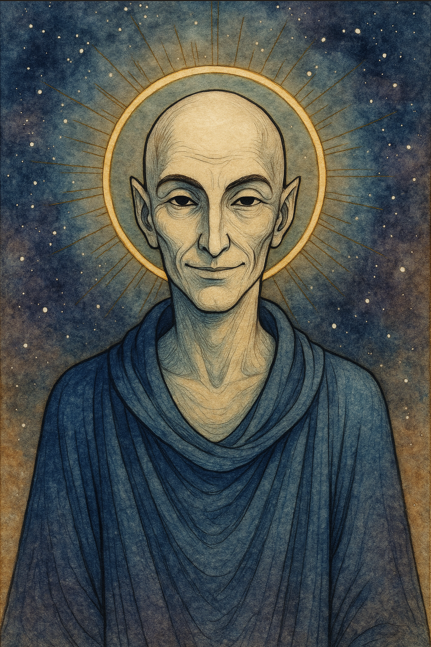Table of Contents
ToggleBuddha, Seth Material and Physics
Buddha is a title given to enlightened Buddhists. Gautama Siddartha is one of the most widely known Buddhas.
Seth Material is a book authored by Jane Roberts. The book contains the teachings of Seth channeled by the author herself. Seth tells us about the fundamental nature of reality and the cosmos.
Physics is a discipline of science that aims to reveal the fundamental nature of reality.
In essence, all three aim to discover the fundamental nature of the cosmos. In this post, I am going to outline how various ideas from these three areas intersect.

About Buddhism and Seth in Seth Material
What Buddha and Seth say about reality are complementary to each other. It’s just that Buddha may have done better at explaining one aspect while Seth does better in others. Since the topic, fundamental nature of the cosmos, is too large, I’ll divide the main topic into several parts.
About Ontology – Seth Material vs. Buddhism
COMPLETE AGREEMENT: Both Buddha and Seth say that our current life is not all there is. Seth advocates the idea of a multiplicity of planes of existence, just like Buddha who said that there are 31 planes of existence.
About Rebirth – Seth Material vs. Buddhism
PARTIAL AGREEMENT: Both Seth and Buddha advocate the idea of reincarnation. However, two slightly differ in their description of how the cycle of rebirth operates. Buddha said that while people may experience multiple rebirths, one cannot choose what entity they will be reborn as. This is in contrary to what Seth says. According to Seth, spirits can choose what life they will experience in the material realm.
Buddha and Seth also differ in their opinions about the reason for rebirth. While Buddha said that getting out of the cycle via the achievement of Nirvana is the ultimate goal, Seth says that our life in the material realm is not necessarily inferior to the realm of higher dimensions. Moreover, Seth describes material life more as an opportunity for learning than as suffering to be escaped through enlightenment.
About ‘I’ – Seth Material vs. Buddhism
COMPLEMENTARY: According to Buddha, there’s no fixed entity of ‘I’. While Buddha’s anatta doesn’t deny the existence of ‘I’, Buddha teaches that ‘I’ is an ephemeral entity that temporarily arises as a collection of five processes. Moreover, Buddha says that attachment to the ‘I’ must be given up in order to achieve Nirvana.
Seth is more supportive of the concept of the ‘I’. Of course, Seth, like Buddha, says that the true nature of the ‘I’ differs significantly from what we currently perceive in the material realm. According to Seth, the ‘I’ is a multi-dimensional energy existent in multiple planes of existence. This ‘I’ is not fundamentally separate from ‘non-self’ because all energy is a connected unity.
In summary, what Seth says is complementary to what Buddha said. I would say that Seth’s description of the ‘I’ is a detailed elaboration on Buddha’s anatta. While ‘I’ exists, it is in essence connected to all other entities, so anatta is also true. However, Seth’s portrayal of the degree of individuality permitted by the cosmos appears greater than that presented by the Buddha.
About The Way To Get Enlightened – Seth Material vs. Buddhism
PARTIAL AGREEMENT: Both Buddha and Seth say that the true realization must and only can come from within. The difference is, while Buddha have introduced The Eight Paths as the way to reach enlightenment, Seth accentuates the importance of experiencing the present moment as it is. Therefore, Buddha’s approach to the realization is more active compared to Seth’s relatively passive approach.
Now With Modern Physics
Some of what has been discovered with physics is in accordance with what Buddha and Seth said. Some are not.
About Ontology – Seth Material + The Buddha vs. Physics
Buddha and Seth: There’s more to the cosmos, and there are multiple planes of existence.
Physics: While physics do not say anything about the existence of entities that cannot be detect with our eyes or apparatus, physics can be related with the idea of multiple planes of existence. Quantum physics describes all particles in terms of wavefunctions, meaning that all entities are in essence both waves and particles. This leads to the principle of wave-particle duality, where quantum entities can exhibit both particle-like and wave-like behavior depending on how they are measured.
To explain how definite outcomes can arise from a probabilistic wave function, some physicists adopt the idea of wavefunction collapse: when a measurement is made, the wavefunction reduces to a single outcome. This raises the question: where are the other possibilities? One proposed solution is the many-worlds interpretation, which posits that all possible outcomes occur, but in different, non-communicating branches of reality. This is analogous to the concept of multiple planes of existence, even though the idea is currently not empirically confirmed.
About Rebirth – Seth Material + The Buddha vs. Physics
Physics says ‘no’ about rebirth. That’s because the material substrate of spirit has not been found yet.
About ‘I’ – Seth Material + The Buddha vs. Physics
According to physics, ‘I’ is a multicellular organism composed of animal cells. These cells are composed of atoms.
Enlightenment – Seth Material + The Buddha vs. Physics
Do well on physics exams, get physics Ph.D and publish influential papers.
Additional Reading
Do Human Beings Reincarnate? What Is The System Of Rebirth?
How To Apply The Laws Of The Cosmos To Live A Better Life